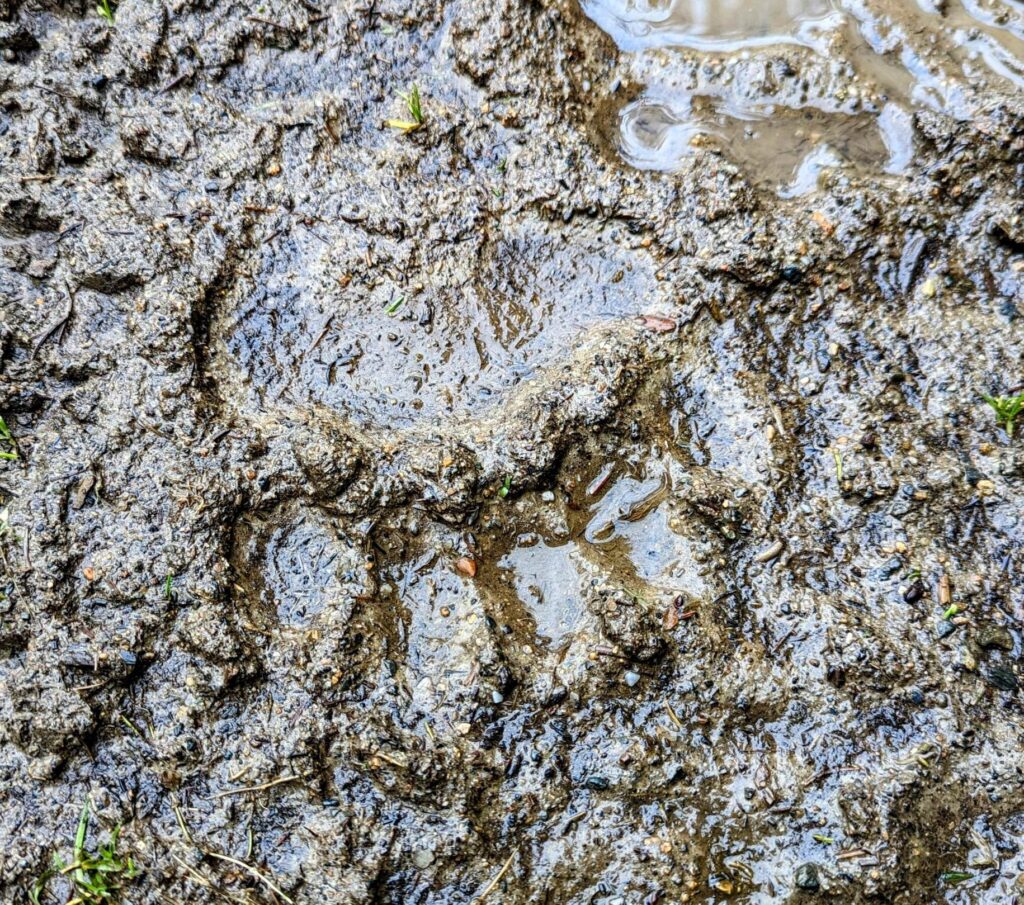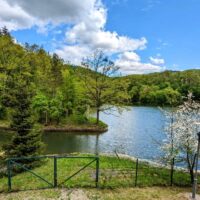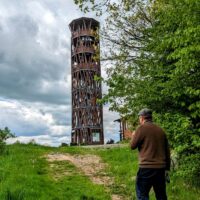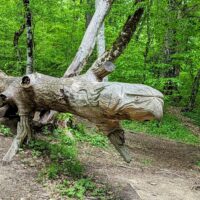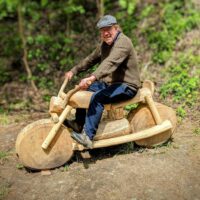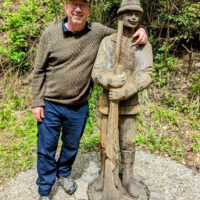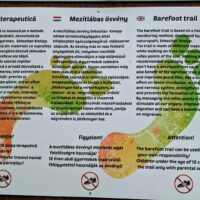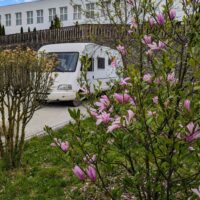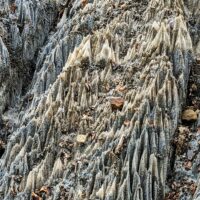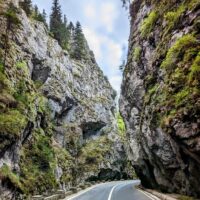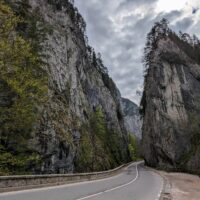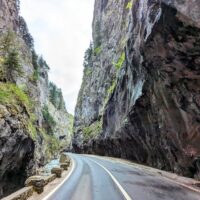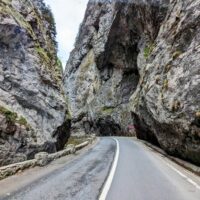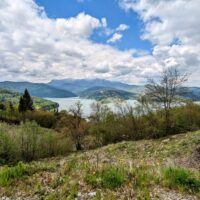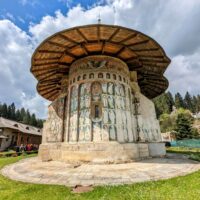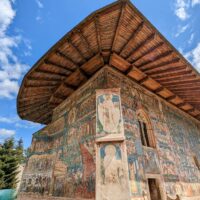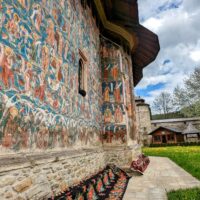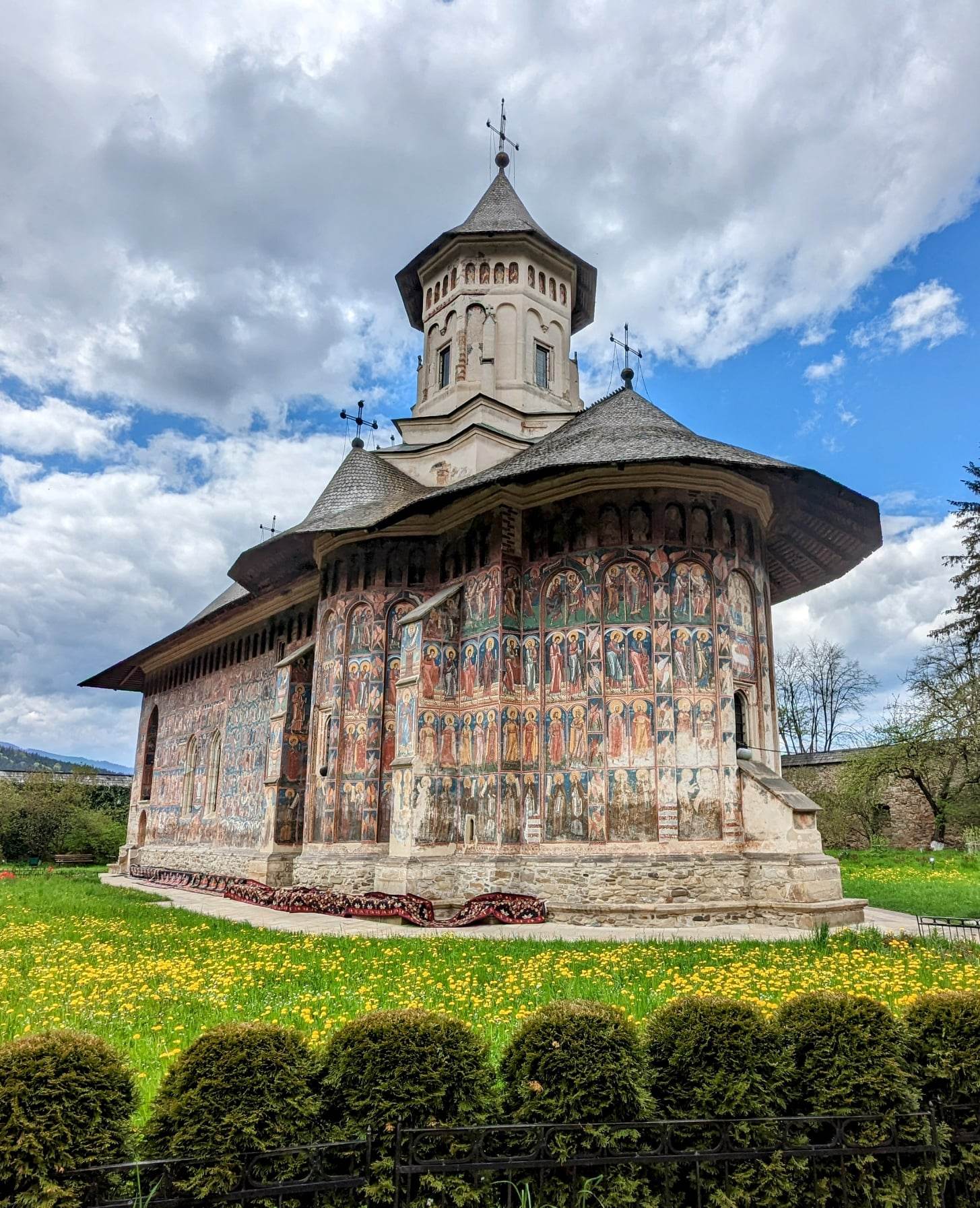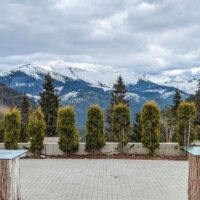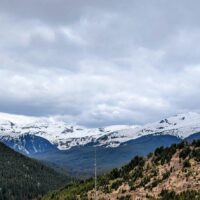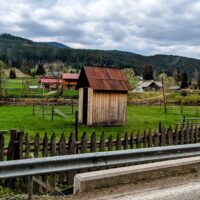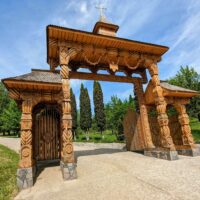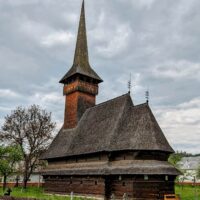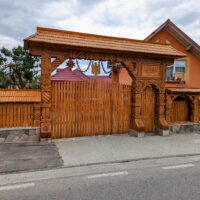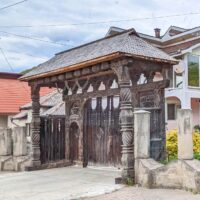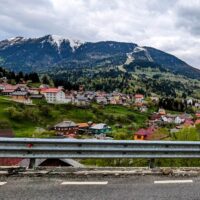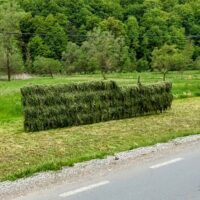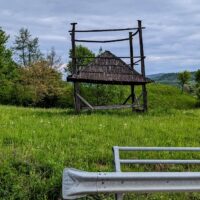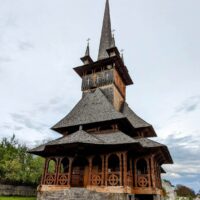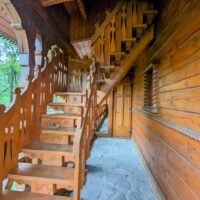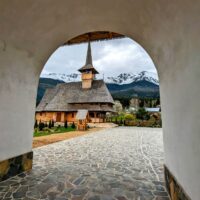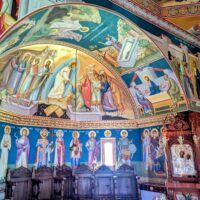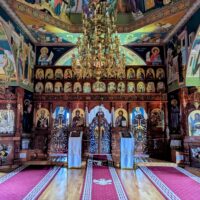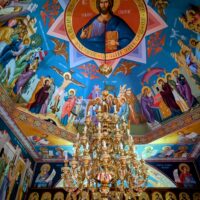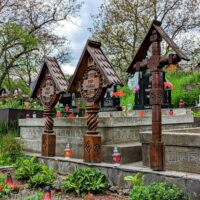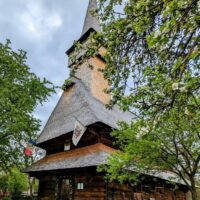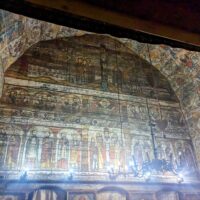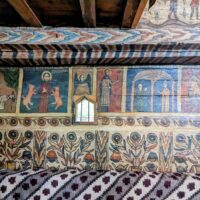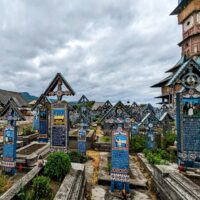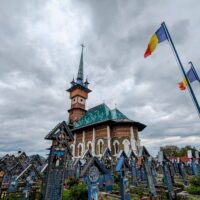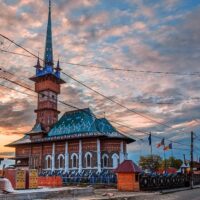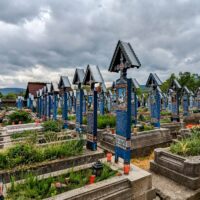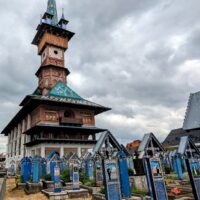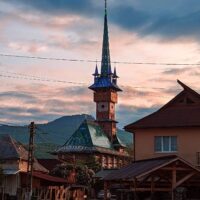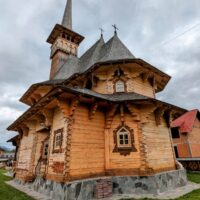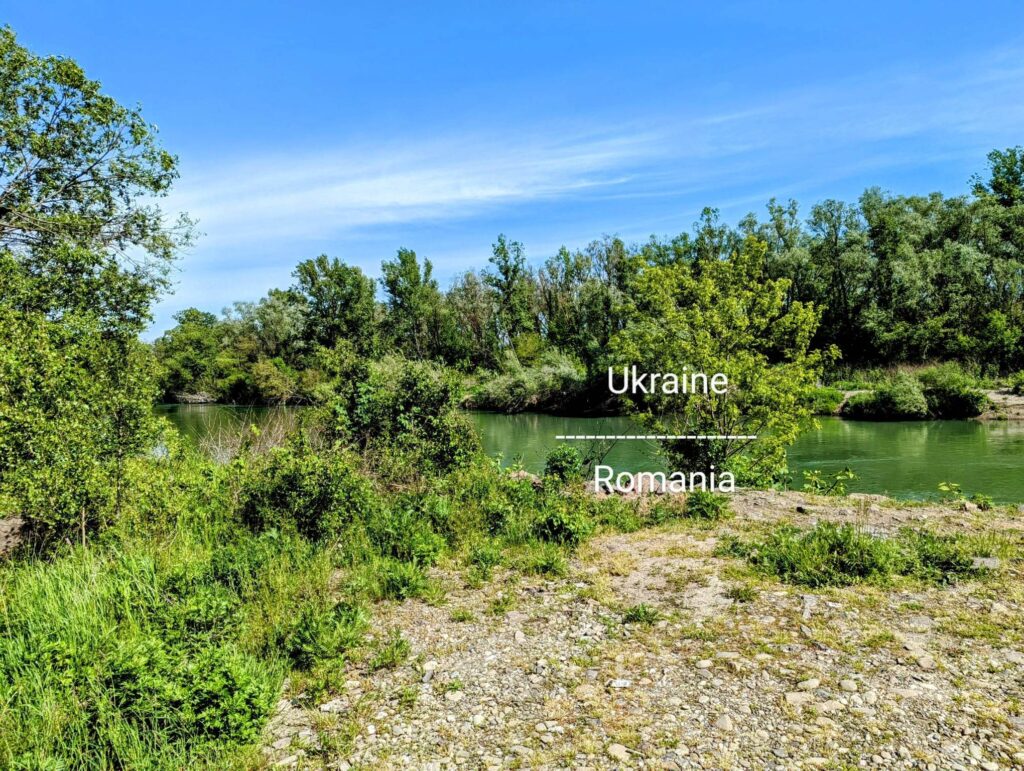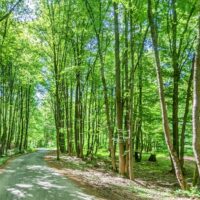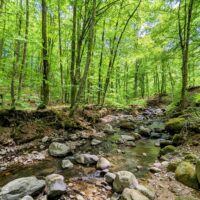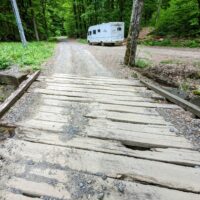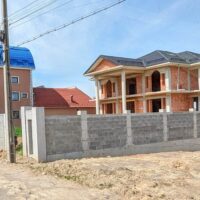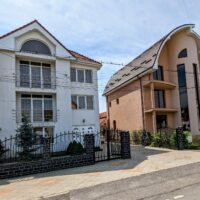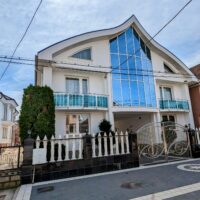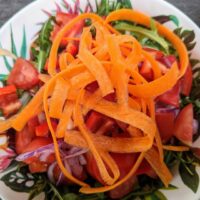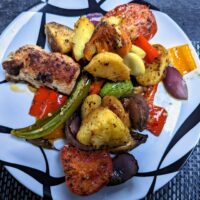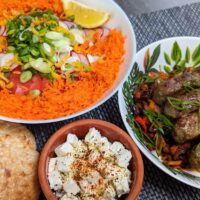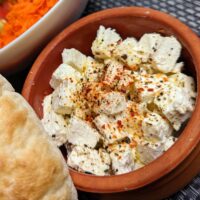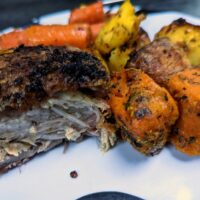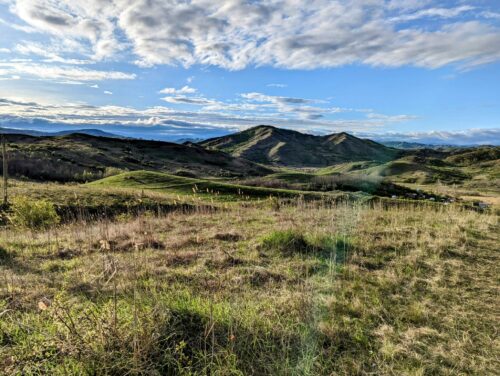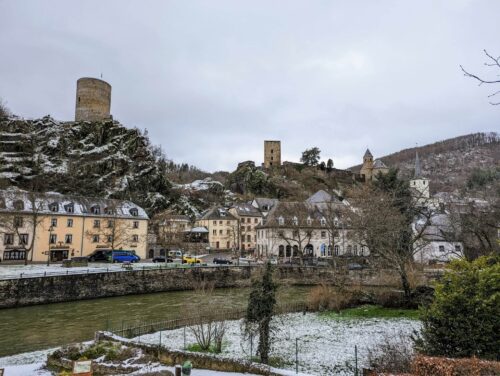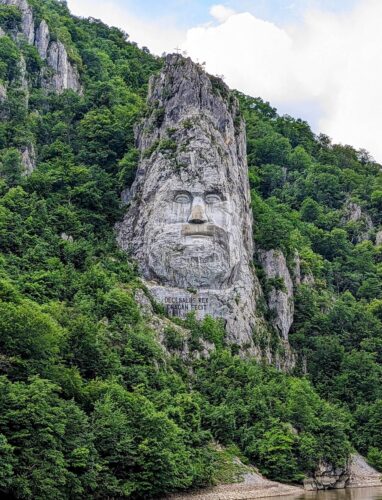This week we explore North East Transylvania.
We see some stunning scenery, painted monasteries, wooden churches, and the Merry Cemetery.
Disclosure: some of the links on this site are affiliate links. This means that at no additional cost to you I may earn a small commission if you click through and make a purchase. In addition, as an Amazon Associate, I earn from qualifying purchases.
The Detail:
Distance Covered: 468 miles
Financial: Fuel £128; LPG £18; Parking £6; Groceries £81; Household £4; Alcohol £13; Zeus £10; Personal £11; Eating Out £15; Entrance Fees £6; Total £292
Stopovers: Ghidut [2 nights]; Vadu Moldovei; Campulung Moldovenesc; Desesti; Sapanta; Vama
In North East Transylvania are the regions of Maramures and Bucovina, separated by the section of the Eastern Carpathians known as the Rodna Mountains.
As we explored the area, we discovered some gorgeous mountain scenery, the painted monasteries of Bucovina, the wooden churches of Maramures, and the Merry Cemetery at Sapanta, right on the Ukrainian border.
Ghidut
Lake Ursa
This is where we finally tried, and fell in love with, langos…..a savoury dish – fried dough topped with garlic sauce, sour cream & cheese (Carol also had bacon lardons) Yummy.
Carol also tried a cozonac which is a fried dough cone, dessicated coconut on the outside with banana, coulis and ice cream inside. Nice but we preferred the savoury dish.
Cheile Bicazului
Bicaz Dam
The Painted Monasteries
Parcul Natural Munti Maramuresului
The living museum of the Maramures
The Wooden Churches of Maramures
Manastirea Borsa Pietroasa
Church of the Holy Paraskeva
The Merry Cemetery
A quiet end to the week
Some menu highlights from this week
Click on the picture for further information. If you would like recipes or further information let me know in the comments
As before, There is so much more we saw and did that I haven’t included here – you’ll just have to go see it for yourself!
I haven’t gone into great detail about anything in particular in this post, so if you would like me to expand on anything please leave a comment and I will endeavor to write another separate post on the topic.
Happy Motorhoming.
Hope You Enjoy!
Please leave us a comment!

